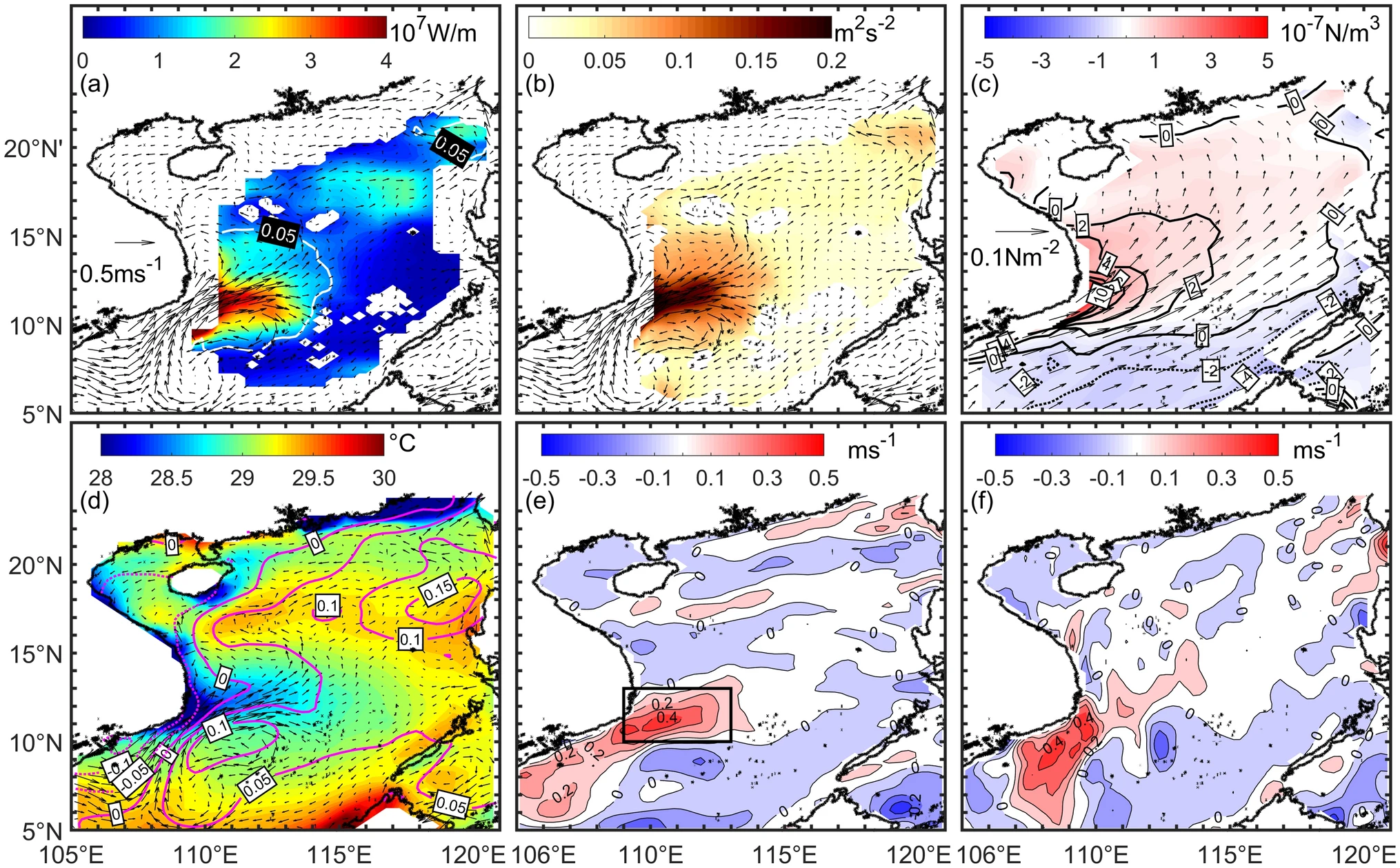Interannual summertime eddy-induced heat transport in the Western South China Sea

Investigated the mechanisms driving year-to-year changes in summertime eddy heat transport (EHT) in the western South China Sea (WSCS), combining satellite altimetry data (SEALEVEL_GLO_PHY_L4_MY_008_047), Argo gridded data (BOA-Argo), remotely sensed wind data from the Cross-Calibrated Multi-Platform (CCMP) product, climatological data from the NOAA NCEP World Ocean Atlas (WOA), ocean reanalysis (SODAv3/GODAS), eddy-resolving ocean circulation data from the Ocean General Circulation Model For the Earth Simulator (OFES), and linear stability modeling. Key findings reveal how monsoon-driven currents and large-scale climate patterns modulate heat redistribution via mesoscale eddies in the SCS.
Key Findings:
- Identified the western South China Sea (WSCS) as a hotspot for summertime eddy heat transport (EHT), with significant interannual variability.
- Identified two distinct regimes: High-EHT years (1994, 1999, 2002, 2006, 2008, 2009, 2012, 2014) linked to intensified summertime eastward jet (SEJ), with 81% greater heat transport than low-EHT years (1995, 2000, 2001, 2003, 2004, 2007, 2010, 2015, 2017)
- Demonstrated that baroclinic instability—driven by vertical shear from surface-intensified SEJ—enhances eddy kinetic energy (EKE) by 33% in high-EHT summers, leading to more energetic eddies.
- Linked interannual changes in EHT to variations in temperature gradients across the region, influenced by local wind patterns and large-scale climate modes like ENSO.
- Established remote ENSO influence: Eastern boundary Rossby waves alter thermocline tilt, contributing to 45–58% of interannual SSH variability at 5–9 month lags.
Methodological Highlights:
- Applied downgradient eddy diffusivity theory (Stammer 1998) to map EHT hotspots using multi-source data (Satellite altimetry, Argo, reanalysis).
- Applied 2.5-layer reduced gravity model to quantify shear-driven instability, showing 3× faster eddy growth rates (17-day e-folding) in high-EHT years.
- Decomposed forcing mechanisms: Local wind-stress curl (Ekman pumping) explains 45% of EHT variance, while meridional heat flux convergence dominates seasonal cycles.
Impact: This work advances the predictability of oceanic heat redistribution in the South China Sea by quantifying how mesoscale eddies respond to interannual climate variability (e.g., ENSO, monsoon dynamics). Findings were published in Climate Dynamics.
Software/packages used: MATLAB